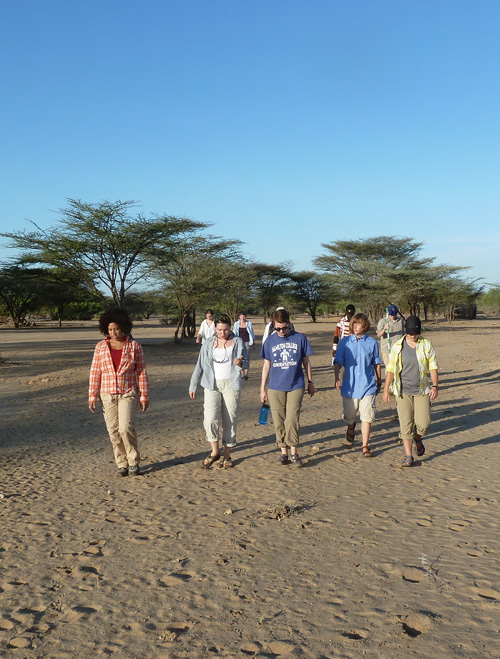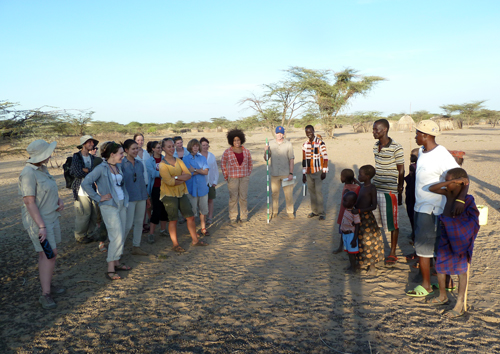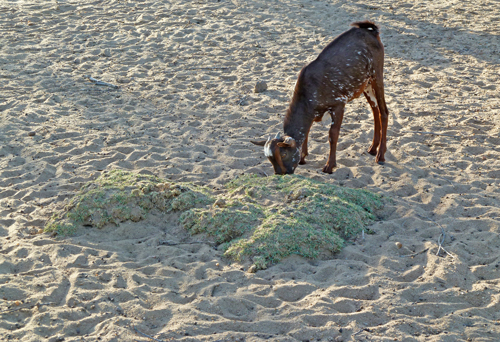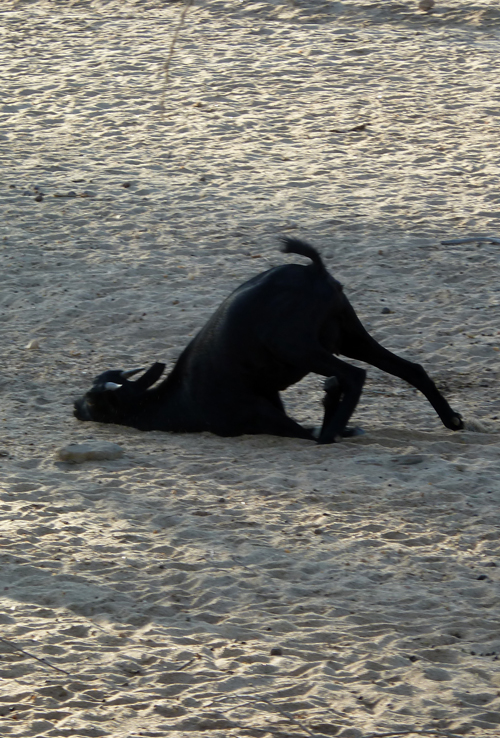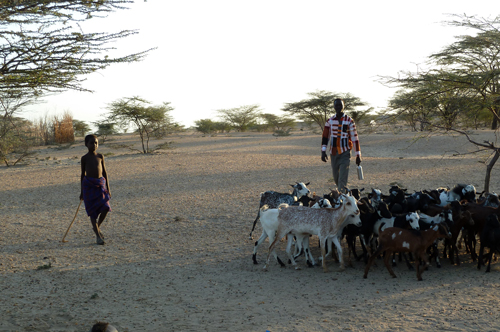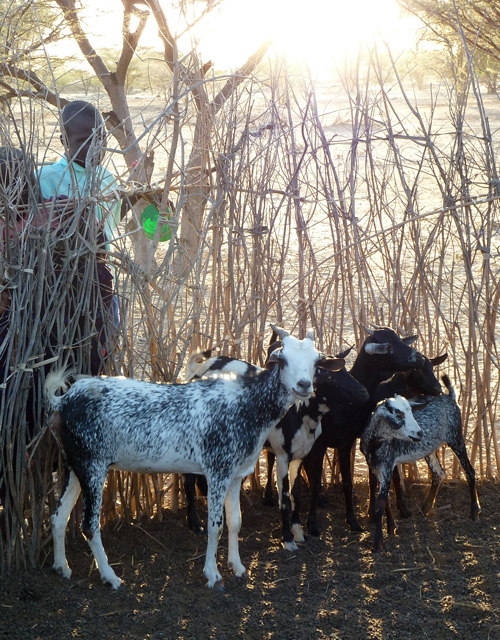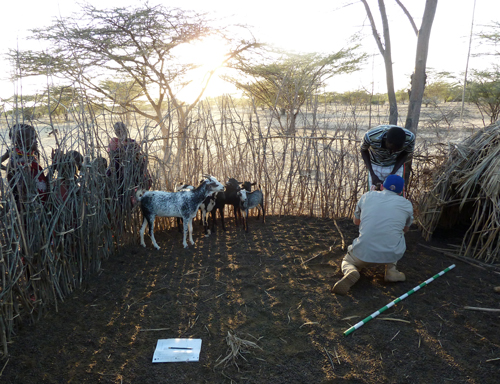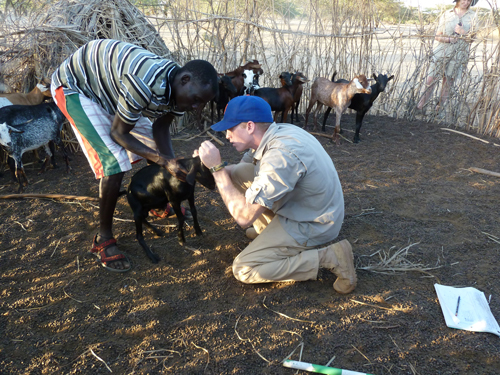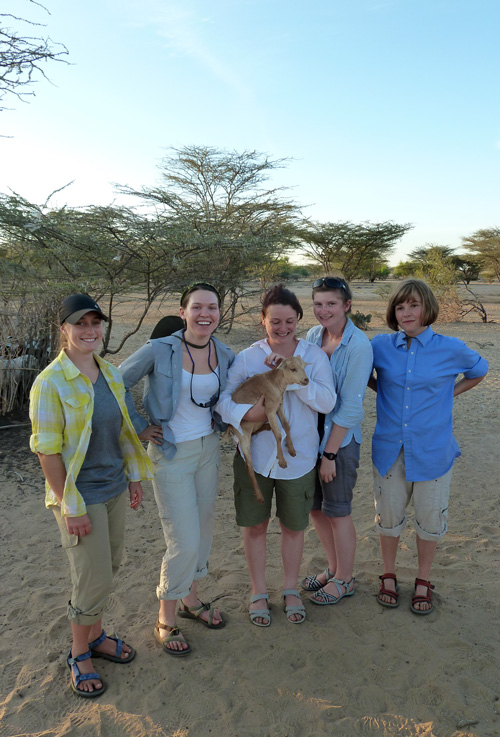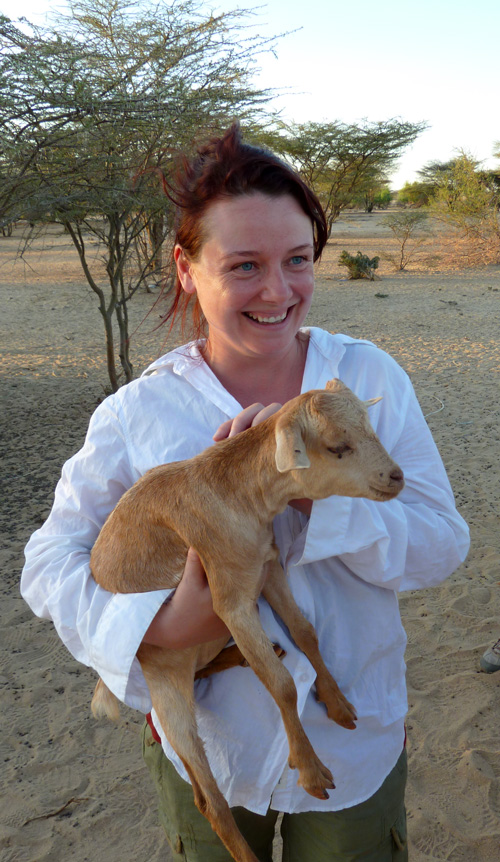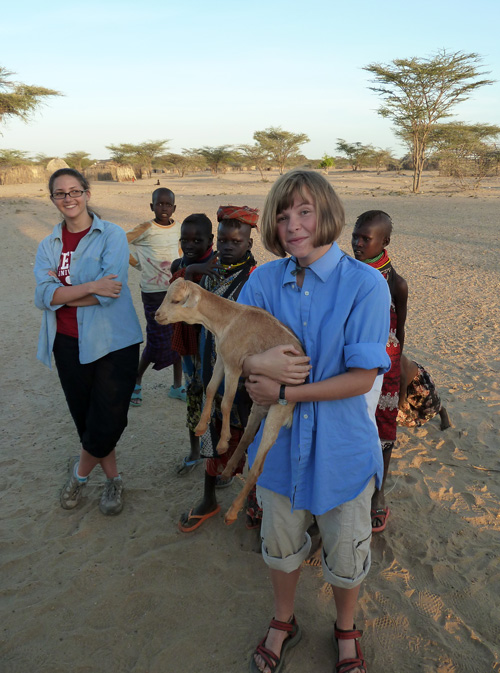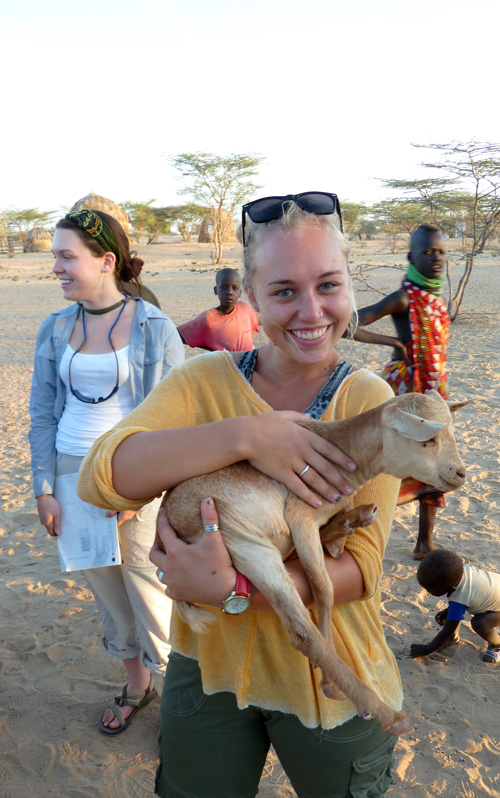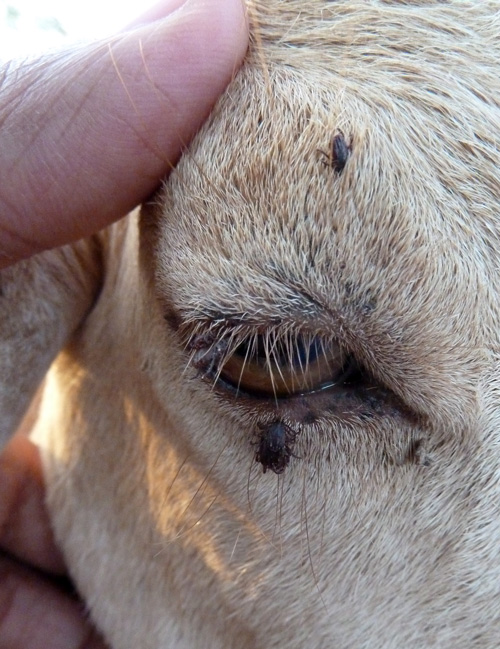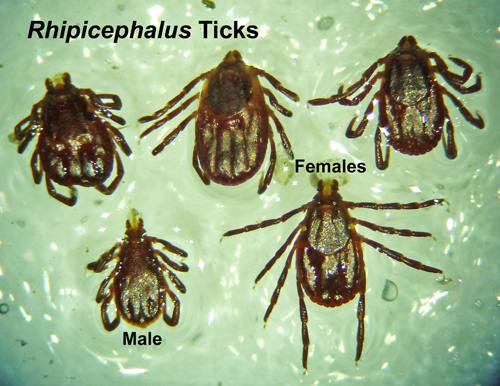The TBI Fall 2014 Field School students visited a livestock boma (enclosure) this past week to learn more about goats, grazing and the ecology of livestock in this arid environment. Goats are the main form of livestock kept in this part of the world and an important part of the local economy and culture.
These ticks are important vectors in some areas, although goats appear to be fairly resistant to the diseases they transmit (primarily East Coast Fever to cattle). The students learned a lot about the challenges facing livestock husbandry in this region as well as some basic biology about ticks and their hosts. One of the challenges facing livestock in a changing environment is that of new and emerging vector-borne diseases – and the data collected by students provides valuable baseline information for longer-term future studies.

